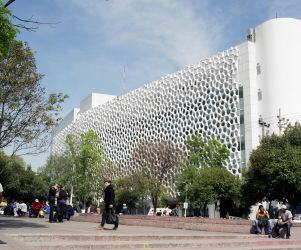How Developments in Pollution Engineering Are Innovating Construction Materials
The construction industry is a massive industry that requires a lot of resources. In fact the construction industry uses about 50% of natural resources, an 80% increase in natural resource consumption since 1980. The US construction industry, between construction and demolition, generated 534 million tons of waste in 2014 and that’s remained relatively stable. Pollution and waste generation seem to be an unavoidable part of construction. However, researchers, scientists and industry professionals are developing ways to decrease pollution through pollution engineering and innovative construction materials.
Table of Contents
Air Pollution Engineering
Air pollution engineering is a division of environmental engineering that focuses on air pollution control and air quality engineering. The field of air pollution control is the techniques and tools used to reduce or eliminate emissions that can harm the environment or human health. While Air pollution engineers are responsible for creating the technologies and processes that reduce or eliminate air pollution. They also can focus on air quality engineering. Air quality engineers help monitor air quality, develop improvements, and evaluate the air supply systems. Their work is important in construction planning and design, but they also help reduce air pollution and energy waste. Air pollution engineering is one of the ways to innovate construction materials and reduce pollution.
Smog-Eating Buildings

In Mexico City and Milan builders and construction engineers are using new technology to produce buildings that can reduce smog. Elegant Embellishments, a Berlin-based architecture firm, created tiles that can break up smog into water and other substances. They used those tiles to create a facade over the Hospital Manuel Gea Gonzalez in Mexico City to help reduce smog and pollution in the area. The best part about the tiles is the tiles can continue to break up smog permanently. So long as there is sunlight the tiles and coverings will break up the smog in these areas. Elegant Embellishments and other architectural firms are using pollution engineering to better the environment.
TioCem
TioCem is an interesting pollution engineering innovation. It is a special cement that uses ultraviolet light to reduce air pollution. TioCem uses titanium dioxide, which is added during cement production. It works like plants and the smog-eating tiles. When the UV light hits the concrete it takes Nitrogen Dioxide and turns it into safe by products. Tiocem can be used on and in pavement, roofing tiles, noise barriers, facades, and most importantly road construction. By adding TioCem into road construction and noise barriers it allows construction to help reduce air pollution.
Self-Healing Asphalt
One of the big issues with asphalt is that it cracks, breaks, scales, and spalls. Cities replace or fix asphalt surfaces every four years because of this. However, engineers have found a way to make self-healing asphalt. Of course, the current expected use of it would help reduce the cost in repairs since America spends roughly $80 billion nationally on repair and operating costs. Using heat, the asphalt is able to melt and mix to reform. The lab that developed it also developed a vehicle that can run over the road and perform this asphalt healing.
Composite Materials
The use of composite materials in construction is relatively new; however, it’s been a popular material choice from marine, aeronautical, and transportation materials. Composite materials are multiple traditional materials combined to produce a finished material that has better properties than its original materials. Some of the benefits to composite materials are their lighter weight and better strength to weight ratio. You’re not compromising strength for a lighter weight material. It’s a surprising pollution engineering innovation as well, since they’re stronger, resist corrosion, and very durable. Building owners don’t have to replace composite materials as often, which helps the environment.
Cooling Bricks
The Institute of Advanced Architecture of Catalonia created bricks that will reduce energy costs. These bricks combine hydrogel and clay in order to reduce the temperature in buildings. The hydrogel absorbs water throughout the day and evening and on hot days it evaporates, which significantly reduces the temperature. This technology is still being tested, it could easily be incorporated into homes to reduce cooling costs. This pollution engineering solution will easily reduce energy costs and help save the environment.
Other Tech
Many other schools and labs are trying to find ways of recycling waste into new products that will last the test of time and reduce our emissions. Every year new pollution engineering technology comes out, giving us the opportunity to reduce long term costs while being better for the environment.
